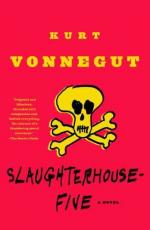|
This section contains 166 words (approx. 1 page at 400 words per page) |

|
For many years categorized strictly as a writer of science fiction, Vonnegut has a propensity for mixing the ordinary and the otherworldly in his fiction. Structured in "the telegraphic schizophrenic manner of tales of the planet Tralfamadore," Slaughterhouse-Five jumps backward and forward in time, and back and forth across the universe in setting. Snippets of events, seemingly unconnected either chronologically or geographically, follow one another; Vonnegut suggests that the cataclysmic devastation of modern warfare has deadened human sensitivity and that modem technology has outstripped the reach of human comprehension. The novel follows Billy Pilgrim, who "has come unstuck in time," to the battlefields of World War II, the slaughterhouses of Dresden, the suburban comforts of Ilium (modeled after Schenectady), and the zoos of distant Tralfamadore. In an age when progress frequently means destruction, the Tralfamadorian concept of time—which, essentially, states that all moments exist and always...
|
This section contains 166 words (approx. 1 page at 400 words per page) |

|




